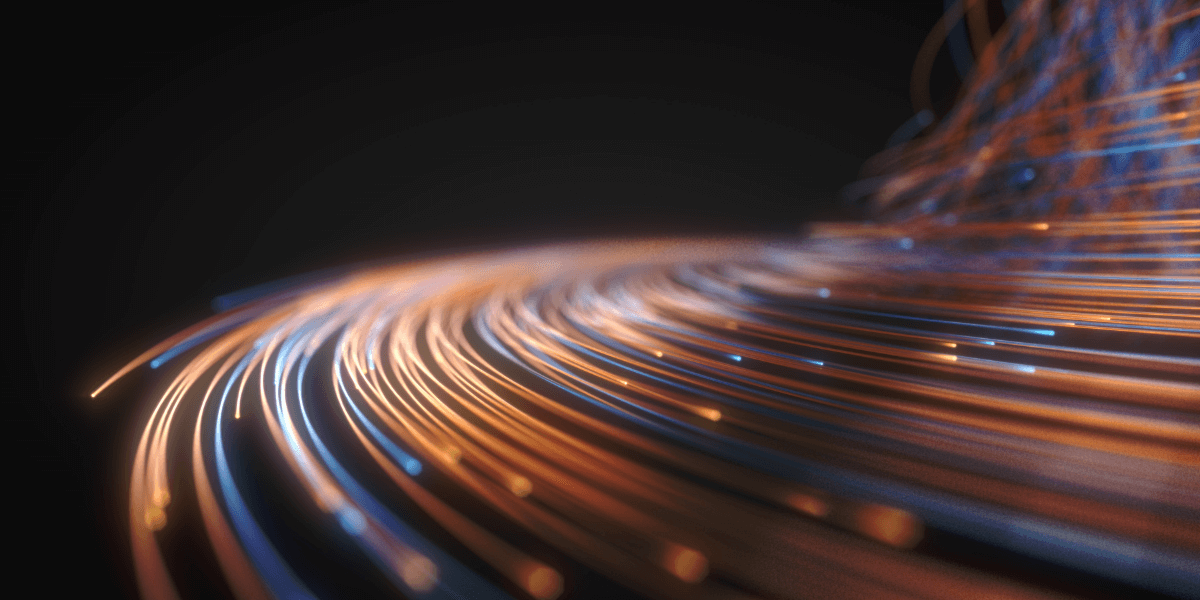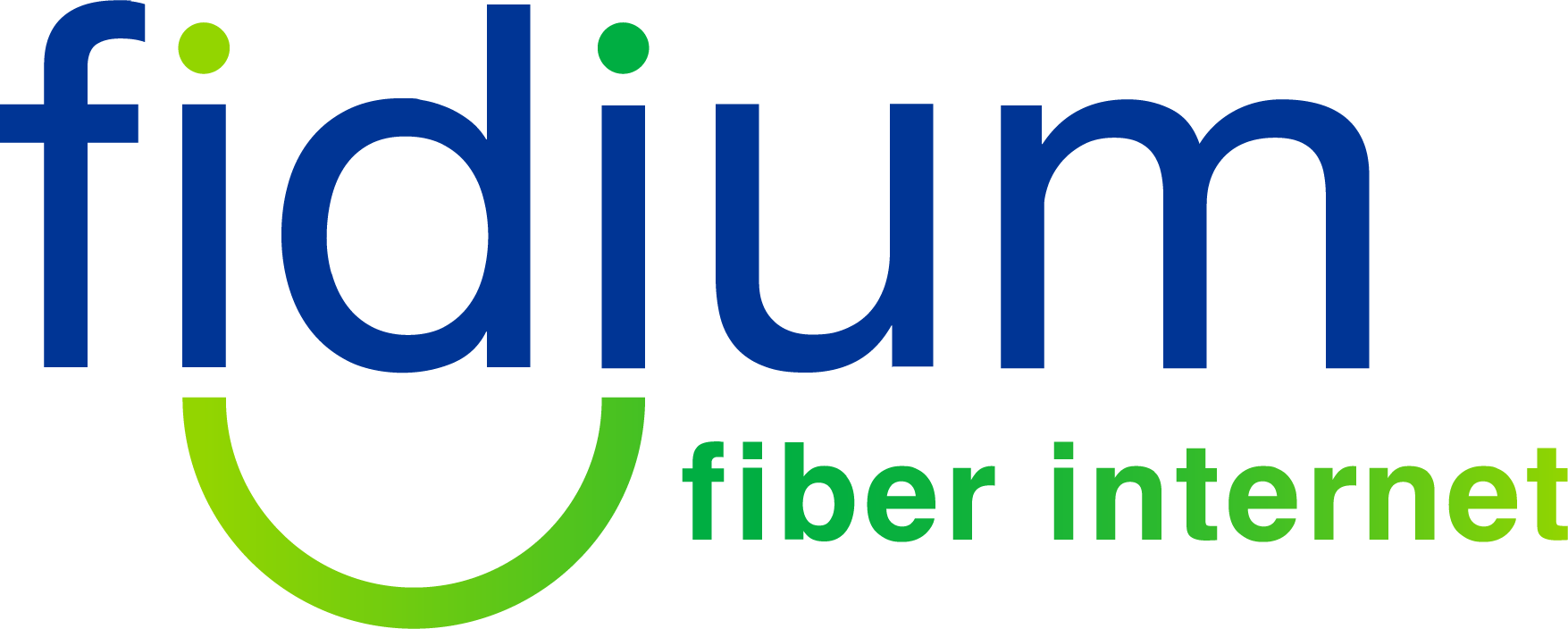The 3 Internet Giants: Fiber vs Cable vs DSL

Table of Contents
With Americans now consuming approximately 700GB of data per month per household [1], your internet connection is essential to daily life. Working from home, playing COD online, or enjoying the newest season of High Potential on Hulu are all reasons to understand the differences between fiber vs cable vs DSL internet.
The three main types of wired internet connections each have pros and cons. By the time you finish reading, you’ll know exactly which internet type fits the needs of your home.
The Three Internet Giants
Let’s get familiar with our contestants.
What Is Fiber Internet?
Fiber internet transmits data as pulses of light through strands of glass or plastic fibers, using the speed of light to deliver your recipes on Pinterest. These strands internally reflect the light signals with barely any resistance—at speeds approaching the speed of light. An optical network terminal (ONT) converts these light signals into electrical signals your devices can understand.
What Is Cable Internet?
Cable internet works through your modem, via coaxial cable, using the same infrastructure that brings cable TV to your home. Cable internet transmits information through copper electrical wires, used for cable television lines. This technology has been the foundation of American home internet for years, offering a solid middle ground between older and newer technologies.
Cable runs on shared bandwidth within your neighborhood. Many users in the same neighborhood often share the connection, causing the speed and performance to fluctuate during peak usage times when many people are online simultaneously.
What Is DSL Internet?
DSL, a Digital Subscriber Line, uses your local phone line to connect to the Internet and transfer data. DSL internet is old-school, slow, and heading towards extinction. It’s built on the copper wiring of landline telephone networks.
The technology works by using different frequencies for your phone and Internet; using both devices at the same time won’t slow your connection. However, the quality and speed of a DSL connection varies based on the distance from your home to the main hub, with closer proximity generally resulting in better performance.

Which wins the speed race?
Speed Comparison
Fiber Internet Speeds
Fidium Fiber offers speed plans from 100 Mbps up to 2 Gigs. All Fidium Fiber plans provide “symmetrical" service, which means the upload speed is as high as the download speed. This symmetry enhances your internet experience, especially for video conferencing, cloud storage, and content creation. While your neighbor on cable might struggle to upload a single video file, you’re breezing through multiple simultaneous uploads without breaking a sweat.
Latency ranges from 10 ms to 12 ms. That latency range is particularly crucial for real-time applications, such as gaming and video calls.
Cable Internet Speeds
Cable internet delivers solid performance that satisfies most households. Cable Internet offers fast speeds—generally up to 1Gig, though many providers now offer multi-gigabit plans. The average download speed ranges from 25 to 300 Mbps, with upload speeds of 10 to 50 Mbps, and a latency range of 13 ms to 27 ms.
Cable internet has the same speed potential as fiber internet. Still, cable operators currently limit speeds due to the limitations of their underlying infrastructure and the way they distribute bandwidth across their networks. The shared nature of cable networks means your actual speeds can vary significantly based on neighborhood usage patterns.
DSL Internet Speeds
DSL speeds tell a different story—it is the slowest of the three options. If you choose DSL, your download speeds would be around 1 to 7 megabits per second. More optimistically, DSL speeds typically range from 1 to 35 Mbps for downloads and 1 to 10 Mbps for uploads.
When the DSL package’s speed is around 1 megabit per second, it’s suitable for basic web browsing and sending or receiving emails. This speed is a good amount for basic web surfing, email, and basic music and streaming. DSL is too slow for HD videos.
Which Connection Keeps You…Connected?
Speed grabs headlines, but reliability pays the bills—literally. When your internet goes down during an important presentation or gaming tournament, speed becomes irrelevant.
Fiber’s Reliability Advantage
Fidium Fiber internet is your best bet for fast and reliable internet, reaching speeds up to 2 Gbps and enduring severe weather conditions, which helps minimize outages. The physical properties of fiber cables give them a significant reliability edge.
Unlike DSL, which is hindered by electromagnetic interference and signal degradation over long distances, fiber optic cables are immune to these issues. Weather resistance is another major advantage. The fibers are made of glass or plastic, unaffected by most weather conditions or electrical interference, ensuring a consistent connection.
Fiber is more reliable because the network is passive—it doesn’t use any electrical equipment between you and the provider that can fail, like cable internet. This passive infrastructure means fewer points of failure between your home and the internet.
Cable’s Shared Reliability Challenges
Cable internet faces unique reliability challenges due to its shared infrastructure. Cable internet is more prone to congestion-related unreliability, especially during evenings or other high-traffic periods.
Weather can also impact cable reliability because the coaxial cable infrastructure can be above ground and exposed to the elements. However, as infrastructure improvements are made, these risks have been mitigated.
Cable internet maintains reasonable reliability for most users.
DSL’s Distance-Dependent Reliability
DSL reliability depends heavily on your location relative to the provider’s equipment. DSL internet, while generally reliable, has trouble maintaining consistent speeds over long distances. Users located far from the central office experience slower connections and occasional dropouts.
The copper infrastructure underlying DSL creates additional vulnerability. The reliance on copper lines exposes DSL services to interference from electronic devices and neighboring cables. However, DSL does offer one reliability advantage: it’s not a shared connection—it’s a direct line to your home, just like fiber-to-the-home installations.

Is fiber available near you?
Geographic Availability
Your internet options often depend more on your zip code than your preferences.
Fidium Fiber Availability
Fiber availability has grown dramatically and is now available to 1 million addresses and counting. Fiber-to-the-home internet availability is limited across the US, although expansion continues at a rapid pace.
With 60,000 miles of fiber across the US and counting, Fidium Fiber is available in eight states: California, Texas, Minnesota, Illinois, Pennsylvania, Maine, New Hampshire, and Vermont.
You can check if Fidium Fiber is available in your area by entering your zip code here or calling 1-833-970-4577.
Cable’s Widespread Reach
Cable internet boasts impressive availability across the United States. Cable is available in 88% of the US [2]. This widespread availability stems from decades of cable TV infrastructure development, which internet services now leverage.
While nearly as abundant as phone lines, cable connections can transmit more data at faster speeds than DSL. The existing coaxial cable networks in most neighborhoods make cable internet accessible to the vast majority of American households.
DSL’s Universal but Declining Presence
DSL offers the widest availability but represents a technology that is in decline. DSL is available in nearly every home with a landline phone, making it accessible even in remote rural areas where other options may not reach.
DSL is still one of the most widely available types of internet in the United States, but its days are numbered. Most DSL providers are transitioning to faster and more reliable technologies, such as fiber, and many are aggressively encouraging their current customers to make the switch.
Cost Analysis
Installation charges, equipment rentals, and long-term value all factor into the total cost of ownership.
Fiber Pricing
Fiber internet pricing has become increasingly competitive as the technology matures and deployment costs decrease. With speeds up to 10 times faster than DSL or cable, often at prices that aren’t much different, fiber is becoming a new go-to internet for American homes.
Fidium Fiber plans are as follows:
- Essential: $30/month for 100 Mbps
- Advanced: $35/month for 300 Mbps
- Supreme: $55/month for 1 Gig
- Futuristic: $75/month for 2 Gig
All plans include free professional installation. Full plan details for home internet can be found here. If you’re considering Fidium Fiber for your business, you can check out plans here.
Call 1-833-970-4577 to speak with a Fidium Fiber agent today.
Cable Pricing
Cable internet is typically more expensive than DSL, but it’s better at handling modern internet use and several devices online simultaneously. Cable providers often bundle internet services with TV, potentially offering savings for households that want both.
The shared infrastructure of cable networks allows providers to offer competitive pricing while maintaining profitability. However, promotional pricing often expires, leading to rate increases after the initial contract period.
DSL Pricing
DSL offers the lowest monthly rates, but the value proposition weakens when you consider performance per dollar. A perk of DSL internet plans is that you usually won’t get the rate hikes common with cable or fiber internet.
Some DSL plans also offer unlimited data, which is a big plus. However, the slow speeds limit the practical value of unlimited data for many modern internet activities.
Your Internet Connection Matters
Given that we spend nearly seven hours daily online [3]—relying on the internet for work, communication, learning, and leisure—the stakes for choosing the right internet connection are HIGH.
The clear hierarchy emerges: fiber offers the best performance and reliability, cable provides a solid middle-ground option, and DSL serves only as a last resort for basic needs.
Fidium Fiber represents the obvious choice for households seeking the best possible internet experience.
Ready to Upgrade to Fiber Internet?
Discover if blazing-fast Fidium Fiber is available in your area. With symmetrical gigabit speeds, unlimited data, and industry-leading reliability, Fidium Fiber delivers the premium internet experience your household deserves. With 99.999% reliability, we’ve built our network to deliver a stress-free connection.
Call 1-833-970-4577 and join over one million customers who’ve made the switch to better internet.
Sources
[1] https://www.astound.com/learn/internet/average-internet-data-usage/
[2] https://broadbandmap.fcc.gov/home
[3] https://backlinko.com/screen-time-statistics
